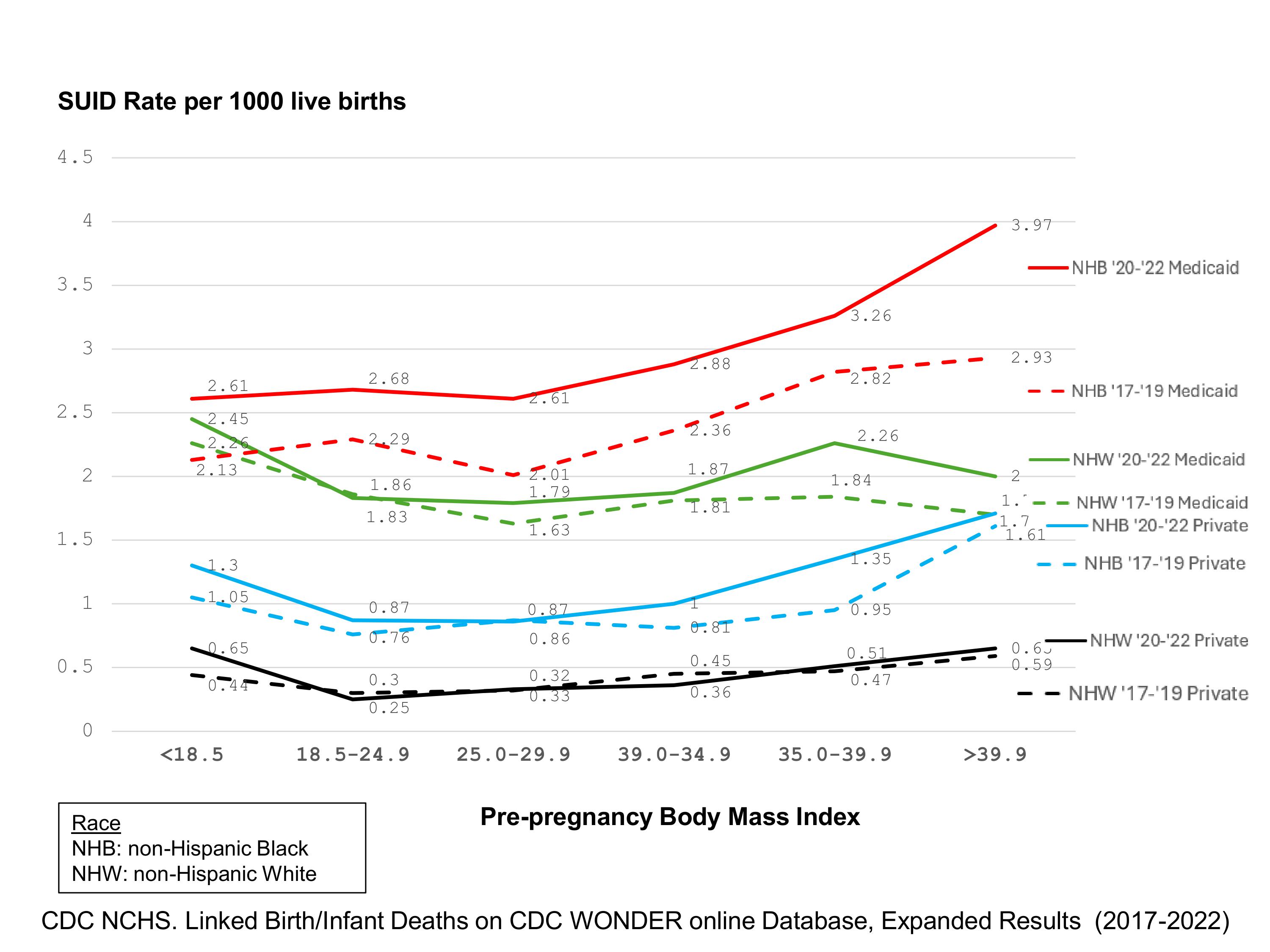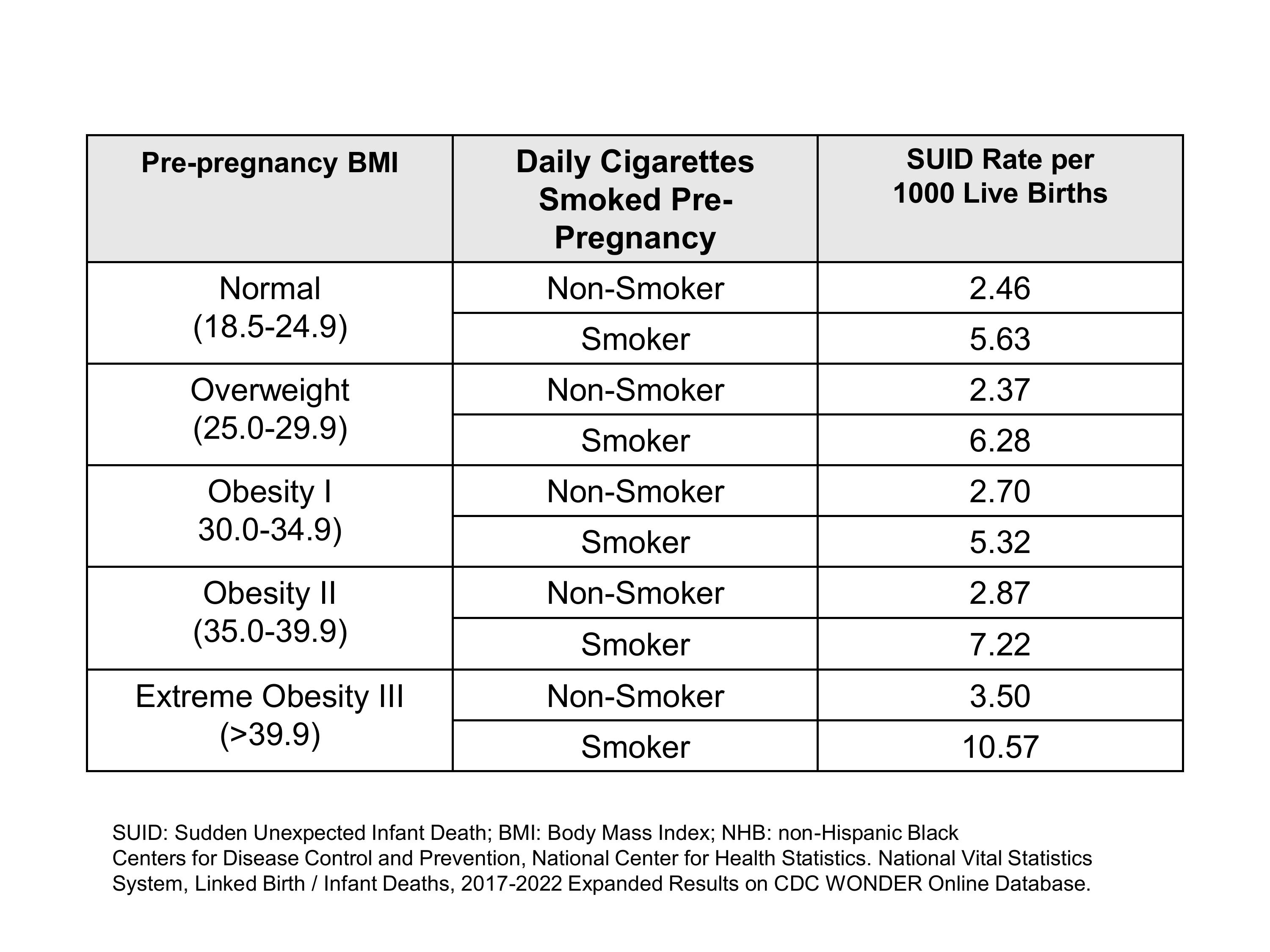Public Health & Prevention 1
Session: Public Health & Prevention 1
366 - Obesity and Sudden Unexpected Infant Death: The Impact of COVID-19, Race, and Poverty
Sunday, April 27, 2025
8:30am - 10:45am HST
Publication Number: 366.5910
Barbara M. Ostfeld, Rutgers, Robert Wood Johnson Medical School, New Brunswick, NJ, United States; Thomas Hegyi, Rutgers, Robert Wood Johnson Medical School, New Brunswick, NJ, United States

Barbara M. Ostfeld, PhD (she/her/hers)
Professor
Rutgers, Robert Wood Johnson Medical School
New Brunswick, New Jersey, United States
Presenting Author(s)
Background: Pre-pregnancy obesity has been identified as a risk factor for SUID in the pre-COVID era, with a dose-dependent association between SUID rates and the levels of the pre-pregnancy Body Mass Index (ppBMI). In 2020, the first full year of the pandemic, compared to 2019, we noted a higher SUID rate in non-Hispanic Black (NHB) mothers insured by Medicaid (2.35 vs. 2.67, p< 0.01), in contrast to privately insured NHB (0.97 vs. 1.02), Medicaid-insured non-Hispanic White (NHW) (1.79 vs. 1.77) or privately insured NHW (0.35 vs. 0.31) groups. The unique increase in SUID in the NHB Medicaid group merits further assessment of this novel risk factor of obesity. Focusing on potentially remediable pre-pregnancy health risks could provide an additional approach to SUID risk reduction in this high-risk population. It is important to understand the health status of women entering pregnancy and the need for equitable access to pre-pregnancy healthcare.
Objective: Evaluate changes in racial- and insurance-specific SUID rates before and during the COVID-19 pandemic in association with ppBMI.
Design/Methods: We accessed Linked Birth/Infant Deaths from the CDC, National Center for Health Statistics, National Vital Statistics System, CDC WONDER Online Expanded Database (2017-2022), for pre-COVID (2017-2019) and COVID (2020-2022) eras. We compared SUID rates (ICD R95+R99+W75) per 1000 live births for NHB and NHW cases categorized by insurance (Medicaid, Private) and ppBMI levels: Underweight ( < 18.5), Normal (18.5-24.9), Overweight (25.0-29.9), Obesity I (30.0-34.9), Obesity II (35.0-39.9), Extreme Obesity III (>39.9). We also examined prenatal smoking status at each ppBMI level.
Results: The Medicaid NHB COVID era group had the highest SUID rates in a dose-dependent relationship between the rates and ppBMI levels. The second highest SUID rates, also with a dose-dependent association, were in the Medicaid NHB pre-COVID group. COVID-era rates exceeded pre-COVID rates in each racial group in all but privately insured NHW cases, which had similarly low rates in both eras. (Figure 1) In the Medicaid NHB COVID-era, SUID rates for smokers rose with increasing levels of obesity. (Table 1)
Conclusion(s): SUID rates were highest for Medicaid NHB COVID-era cases and rose in a dose-dependent association with ppBMI. For pre-pregnancy smokers, SUID rates were increasingly higher at each ppBMI. We speculate that pre-pregnancy risks, higher in Medicaid, need an effective therapeutic intervention that requires improved access, which was compromised during COVID-19.
Figure 1. SUID Rates by Pre-pregnancy Body Mass Index Level

Table 1. SUID Rates in Association with ppBMI and Smoking Status in Medicaid Insured NHB Mothers (2019-2022)


